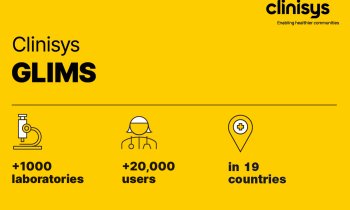4 steps to successful staff planning
Interview by Annette Bus
Most hospitals must now report on the origin, cost and usage of all equipment and supplies. However, far less is known about a hospital's most important and expensive* asset: employees. Despite financial pressures, DRGs, and the EuGH judgement, which aims to end stress (particularly for junior doctors) discussion of the economical and effective use of personnel is frequently avoided, or can evoke emotional reactions.

Yet dialogue on demand-oriented staff planning could not only prevent job losses but also begin processes from which everyone would benefit. We know something must change. The questions are: What? and How? In an EH interview, Dr Burkhard Scherf and Hans-Joachim Schütt, of Dr Scherf, Schütt & Partner, a consultancy specialising in the effective use of hospital staff, described current research, evolving philosophies and constructive procedures that could provide the answers.
‘An employee is not like a packet of plasters - we are not talking about objects - and more than just money is at stake,’ Dr Scherf pointed out. ‘It’s about people, about a special, medical work ethic, and about status, self-respect and fears. As soon as you look into demand-oriented use of staff - i.e. the questions: What type of work arises when? and When do we need how many doctors and nurses with what type of qualifications? - you see that this addresses all key subjects in a hospital. That is, what types of services are provided, how much they cost and are those costs covered by case-based standardised lump sums paid by medical insurers. However, you cannot look at this subject from just one angle. Organisation, workflow, interdisciplinary co-operation of departments and quality of leadership are factors that all figure in demand-oriented staff planning.’
SSP describes demand-oriented staff planning as a four-step process:
• Assessment of staff requirements
• Working hour models
• Time management
• Planning staff use
‘Questions that arise around these four issues are:
How can we organise this process of change? How will I win over the right people for this project? How do we generate the energy for change in all departments involved?
Dr Scherf continued. ‘In the first step, the assessment of actual requirements, the objective is to predict quantitative and qualitative curves of demand. Only when these are established can we tailor staff rotes. One thing is clear: the traditional model, where existing job head counts are filled with hours, is no longer feasible.
‘The second step involves assessing which working hour models are best suited to cover staff demand. Rigid forms of working hour models are not suitable, because they entail, for example, overtime during particularly heavy periods of demand and wasted time during down periods. So we need different lengths of shifts and working hour models. Surprisingly, many hospitals still do not make use of the options offered by the BAT (A collective labour agreement covering public sector workers in Germany. Ed). We also have to examine the kind of part-time work would be feasible. Usually, part-time nurses are in a relatively high proportion, which lends itself to flexible, demand-oriented staff planning. However, part-time work is much less common for doctors, although sometimes doctors say they would prefer to work 70% or 80% of the time, rather than full-time. In that case, the loss of net income is not always so severe, because a drop in taxation offsets it.
‘The third step is about handling working hours and actively controlling working time accounts.
What is the proportion of overtime and down times compared with other medical areas? What information is needed to establish a sensible work rota?
Absence management is another important subject. Holidays or training days are not natural disasters; they are foreseeable. The only thing that cannot be predicted is staff absence due to acute, short-term illnesses, but this is only a small proportion of staff absence. Many of those responsible for planning staff rotas feel a little isolated. They have to work around areas of conflict between economic concerns and colleagueship. This is where any plans for the introduction of demand-oriented staff rotas tend to become stuck, particularly if not enough time has been invested in raising awareness around the need for demand-oriented staffing prior to the project’s commencement.
The fourth step, the actual concept of staff planning, involves organising a flow of information that ensures that those responsible for staff planning always have the information they need:
What demand are we likely to see over the next few weeks? Which colleagues are available? Which ones aren’t?
These questions must be answered not only from the perspective of headcount but also from the aspect of what qualifications the available staff must have. One also has to account for any particular events that may affect a hospital. A good rota means that personnel are not simply spread evenly but that over and under capacity is avoided.’
Asked about the introduction of computerisation in staff planning, SSP pointed out that it is important, but that the fourth step is initially about conceiving and establishing a flow of information that works. Then software can be used. ‘Many companies that aimed to introduce a software solution before considering steps one to three of the process now say:
Now we’ve landed ourselves with software which is merely automating the inefficient processes we had to begin with!’
Asked whether staff planning software could be integrated into HIS, PACS and RIS systems, SSP pointed out that software can create work rotas, collate and evaluate working times, then translate the results into a wages and compensation system. Initially there is very little direct exchange of data. ‘However,’ Dr Scherf added, ‘we can think about comparing data on demand and service with the actual or planned use of staff. There is a lot of potential for data collation and evaluation, but data collation must not get out of hand. Only an approximation of how many hours a doctor spends on a particular service for a particular patient can be reached, although we need some idea, otherwise we’d never be able to work out whether standardised DRG lump-sum payments are sufficient.’
In terms of economic benefits of this kind of project, SSP explained that the amortisation time is just under a year. ‘A study carried out by the University of Wurzburg (Professor Nagel) found that the introduction of efficient staff planning combined with software-controlled time management in different hospitals can save between Ä25 and Ä150 per employee. The big margin between the highest and lowest savings potential results from the fact that all depended on how well these hospitals were prepared for demand-oriented staff control. However, it shows the great potential of this planning.’
Facing such massive changes, the keyword is surely change management? ‘You cannot NOT have change management,’ said SSP. ‘Hospitals have always carried out change management, although not always consciously. Even though many of the staff in many hospitals support the process of change, hospital areas on the whole still have a very high need for professional control over change.’
Due to the strong trisection between commercial issues, care and medical services, they pointed out that there is still not the right awareness of change management. Another problem is that different medical fields may have only rudimentary, interdisciplinary co-operation. There is also a lot of catching up to do regarding leadership, they added. ‘Many hospitals tend to look at the issue of co-operation from a purely medical aspect. However, to effectively introduce change, along with all other organisations, hospitals need a certain quality of leadership. There is a reason behind strong hierarchies in medicine. For example, in an operating theatre there is no room for long discussions on whether to do something this way or that way - you need clear decisions. But not all changes in hospitals relate to decisions about life and death.
‘Change,’ SSP concluded, ‘can only succeed if there is a common awareness of the need for it among all those who are involved - doctors, nurses, everyone - along with their active involvement in that change.’
(* Amounting to 70% of hospital costs in some countries).
07.08.2006










